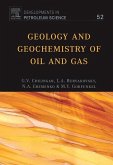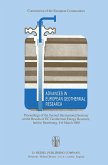Twenty years ago, the objectives of the ?rst edition of this book were numerous and ambitious:todemystifytheprocessofwellloganalysis;toexaminethephysicalbasis of the multitude of geophysical measurements known collectively as well logging; to clearly lay out the assumptions and approximations routinely used to extract pet- physical information from these geophysical measurements; to expose the vast range of well logging instrumentation and techniques to the larger geophysical community. Finally,therewastheimportantgoalofprovidingatextbookforuniversityandgra- atestudents inGeophysics andPetroleum Engineering, wherenone suitablehad been available before. What's different twenty years later? First of all, Well Logging for Earth Scientists is long out of print. The petroleum industry, the major consumer of the geophysical information known as well logging, has changed enormously: technical staffs have been slashed, and hydrocarbons have become increasingly harder to locate, quantify,and produce. In addition, new techniques of drilling high deviation or horizontal wells have engendered a whole new family of measurement devices incorporated into the drilling string that may be used routinely or in situations where access by traditional "wireline" instruments is dif?cult or impossible. Petroleum deposits are becoming scarce and demand is steadily increasing. Massive corporate restructuring and the "graying" of the workforce have caused the technical competence involved in the search and exploitation of petroleum to become scarce. Although we are only attempting to address this latter scarcity with our textbook, the objectives are still ambitious.








